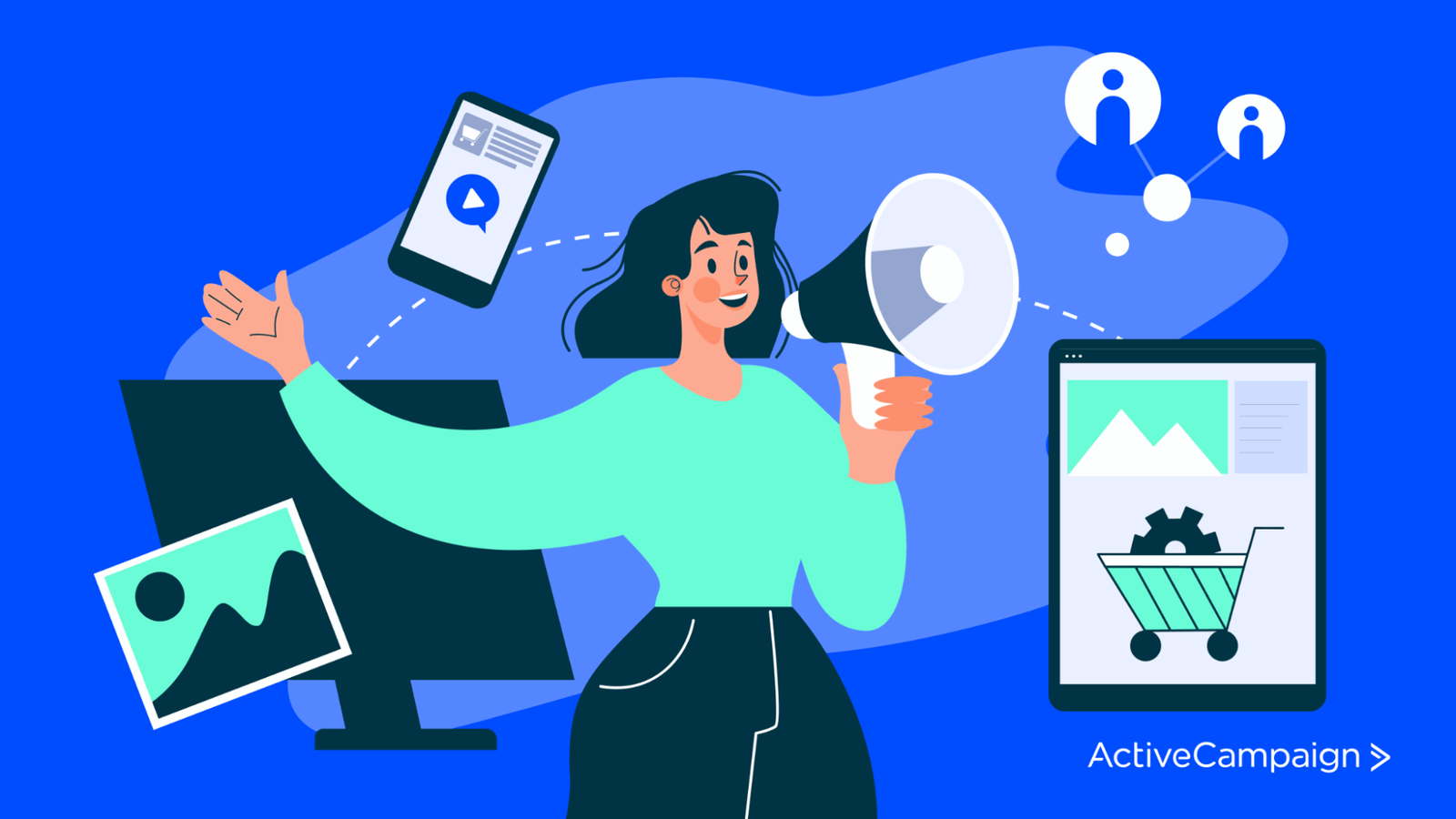Online marketing used to be a niche. Today, it’s a necessity.
Between desktop computers, laptops, tablets, and mobile devices, the Internet is where people communicate, learn, and shop. In fact, the average American spends more than 8 hours online every day.
But knowing how to get started with online marketing can take time and effort. This umbrella term covers many different channels and types of content, all of which speak to some audiences better than others.
This article will explain what online marketing is and explore the main categories it falls into. We’ll also cover different online marketing channels, how they work together, and how to start.
Table of contents
What is online marketing?
Online marketing is any kind of marketing activity that takes place on the Internet. From review sites to video ads and influencers, they all connect with and influence a target market by providing some kind of content or message.
Originally, digital marketing mainly consisted of websites, ads, and email. However, the ways in which people can connect have expanded tremendously. As a result, the world of online marketing has exploded.
Today, online marketing is a mix of all kinds of content across all types of mediums. What’s more, these online platforms all work together to provide a consistent brand experience.
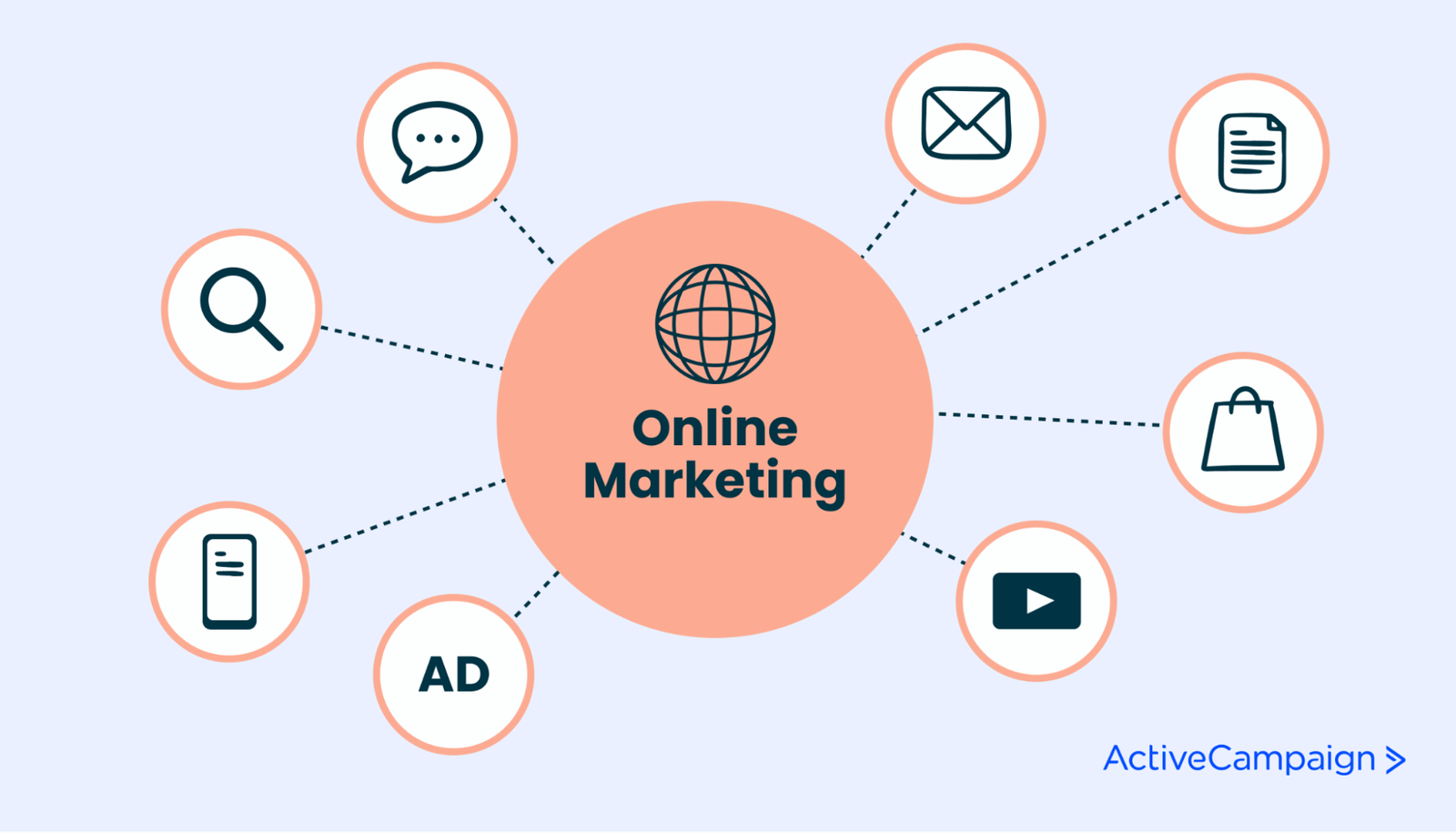
While just about any industry can benefit from online marketing, it’s especially important for retail and e-commerce. Global ecommerce sales reached $5.2 trillion in 2021 and will top $8 trillion in 2026.
Internet marketing even influences in-store shopping. When surveyed, 46% of consumers said they use their mobile phones to research products while shopping in stores.
From groceries to clothing to appliances and more, online marketing is an essential and ever-changing part of business.
Types of online marketing
Online marketing is much broader than before. Here we’ll cover the main types of online marketing in use today and how they work together.
Search engine optimization (SEO)
Search engines have quickly become the gatekeepers to both knowledge and audiences. Whether you want to learn about a topic, find an expert, or buy something, a search engine is usually your first stop.
Search engine optimization (SEO) means crafting your content to appeal to search engines and rank higher in the search results.
Google is the most popular search engine by far, so your first steps should be making sure that Google can easily find your content:
- Make sure your website(s) are being crawled and indexed
- Connect your site(s) to Google Search Console
- Submit your sitemap through Google Search Console
SEO is always evolving, but there are a few things any business should do to make it easy for search engines to find and list their content.
These include:
- Target keywords: Take time to identify target keywords for your brand and products.
- Provide meta information: Meta titles, meta descriptions, and image alt tags all help your content get found.
- Link building: Cross-link to different pages on your site and look for backlink opportunities. Link building is an important off-page SEO strategy, as it tells Google that your content is relevant and authoritative.
Creating valuable and engaging SEO-friendly content is one of the best ways to improve your SEO. Google and other search engines try to rank pages that best answer user questions.
Search engine marketing
Like search engine optimization, search engine marketing (SEM) uses search engines to increase a brand's or website's visibility. The difference is that search engine marketing is when you use paid ads to target keywords.

As with SEO, SEM is about creating content relevant to your focus keywords. But it’s also about balancing the cost of particular keywords with the audience they provide.
We’ll learn more about paid advertising later, so keep reading.
Content marketing
Content marketing is when you create valuable content that gets your audience to form a relationship with your brand. Although blogging has been around for decades, it’s still one of the most popular content marketing channels and is used by 84% of content marketers.
Many brands approach content marketing as giving customers something for free to eventually inspire sales. By offering advice, information, or entertainment, you build trust with your audience while building your search engine visibility.
If your company sells rock climbing gear, you might create a series of blog posts on how to get started climbing. Because it’s your own blog, you can seamlessly weave references to the gear you sell. New climbers would find your content and subscribe to your newsletter or follow your social media channels.
Blogging isn’t the only type of content marketing. When surveyed, 69% of content marketers said they use videos to reach their audience.
Other content assets you can use in your digital marketing strategy include:
- Ebooks
- Infographics
- Webinars
- Case studies
- Worksheets
Although we discuss them in separate sections, email, and social media marketing are types of content marketing.
Email marketing
Email marketing is one of the earliest forms of digital marketing, but it’s still incredibly powerful today. More than 91% of Internet users are also email users. Among email users, 99% check their email every day.
The continued popularity and effectiveness of email is why 37% of businesses said they planned to increase their email marketing budget in 2022.
There are 3 main types of email:
- Transactional emails: Directly related to an action by the user (usually a purchase or signup).
- Behavioral emails: Uses data about the user’s behavior to send them relevant content (e.g., a discount for the product the customer clicked on in the last email).
- Promotional emails: Intended to promote your offerings and speed up the buying process (seasonal sales, special promotions).
No matter what kind of email you send, beautifully designed emails are a must. Customers only spend about 10 seconds looking at a brand email, so your offer should be very clear.
For example, this Bonobos email immediately tells you the most important information (the 15% discount) and gives you a call to action (the “Shop Now” button).

Email marketing is a way to build trust and familiarity, offer specials and discounts, and nurture leads toward conversion. Because modern marketing requires so many email communications, more businesses (including small ones!) are turning to email automation to save time and amplify their efforts.
Make The Most Of Your Online Marketing
Social media marketing
Internet users spend an average of 147 minutes on social media every day. People use social media to keep up with the topics they care about. Each person’s feed is personalized based on their interests. This makes it perfect for marketing.
Social media marketing involves creating and publishing content, as well as engaging with others, including your customers. When people tag your brand or comment on your posts, liking or answering their comments is a way to make a personal connection and strengthen the relationship.
Once considered a novelty for young people, social media has grown into a vital marketing arena. In 2021, 82% of those surveyed said they had purchased a product on their phone after discovering it on social media.
Unpaid social media content is called “organic” and is a cost-effective way to increase brand recognition and share your products. Brands can also pay for social media platforms to show their ad to more users. Sometimes called “sponsored” or “boosted” posts, these paid posts can help you gain exposure from people who haven’t followed you yet.
But even an organic post can function as an ad. Brands like Fender often show people enjoying their products in content that fits right in with posts that customers see from their friends.

Which social media platforms you use will depend on your industry and audience. For instance, recipes and cooking content can perform very well on Pinterest, but a software-as-a-service (SaaS) company would be better off on LinkedIn.
Paid advertising
Much like traditional marketing on billboards or in magazines, online marketing also encompasses paid advertising, where brands pay to have their ads shown in the digital spaces where their audience dwells.
As we mentioned above, search engine marketing is a kind of paid advertising in which brands create text and display ads related to target keywords and then pay search engines to appear on the results page for those keywords.
For example, if someone searches for “free trade coffee,” Google shows the top organic search results alongside ads from brands that paid to appear there.

With their massive reach, Google and Facebook are the most popular digital advertising platforms among retailers. Both platforms allow marketers to target specific audiences based on geography and other details.
While Google and Facebook are the biggest advertising platforms, you can also place various ads on YouTube, LinkedIn, online publications, and more. Like in the real world, advertising usually follows wherever there’s an audience online.
Affiliate marketing
As more people gain an online following, affiliate marketing has emerged as another powerful way for brands to connect with audiences.
Affiliate marketing (sometimes called “influencer marketing”) is when a third party encourages their audience to buy from a brand. Unlike celebrity endorsements, the endorser doesn’t have to be a global superstar. Depending on the affiliate’s niche and strategy, they could have a thousand followers or even millions of followers.
There are 3 main types of affiliate marketing:
- Unattached: When the affiliate has no expertise or connection to the product (e.g., an individual creating pay-per-click ads).
- Related: When the affiliate promotes products related to their niche, although they may not personally use them (e.g., a fitness blogger linking to the equipment they don’t use).
- Involved: When the affiliate promotes products they actually use and vouch for (e.g., a knitter linking to the yarn and needles they used in a YouTube video)
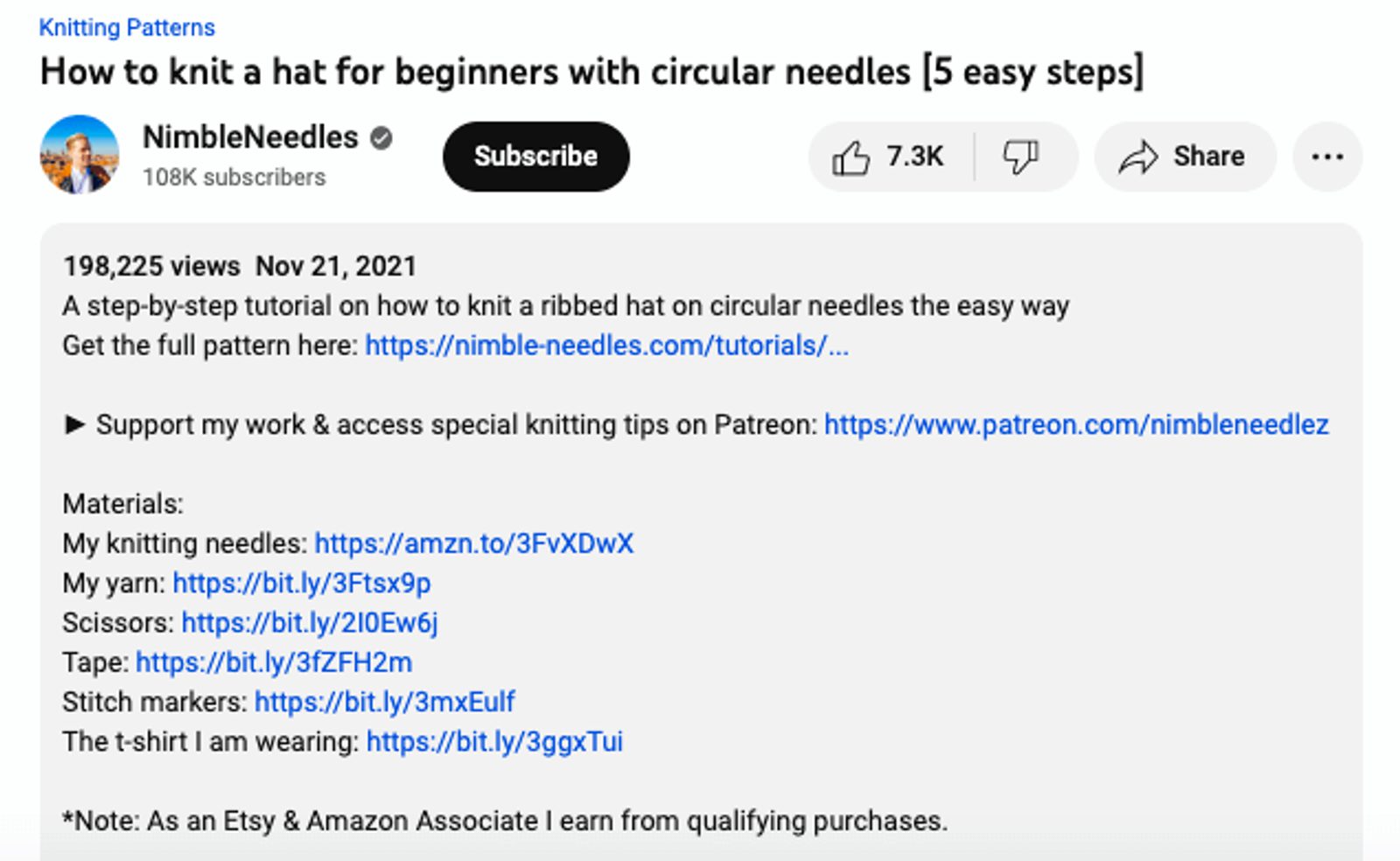
Since many affiliate marketers have a level of trust and connection with their audience, affiliates can be a cost-effective way to reach new potential customers.
Chat and conversational marketing
As digital marketing grows, businesses have begun using artificial intelligence and live representatives to provide chat mechanisms and other types of conversational marketing. In 2022, 56% of millennials said they had contacted a brand through chat.
Conversational marketing is any kind of marketing that creates a 2-way conversation with the customer. This can be done through customer service representatives or artificial means, such as chatbots.
Conversational marketing can be valuable for nurturing leads for complex transactions or leads still early in the buying process. Brands can even use chatbots to generate leads by asking for contact information.
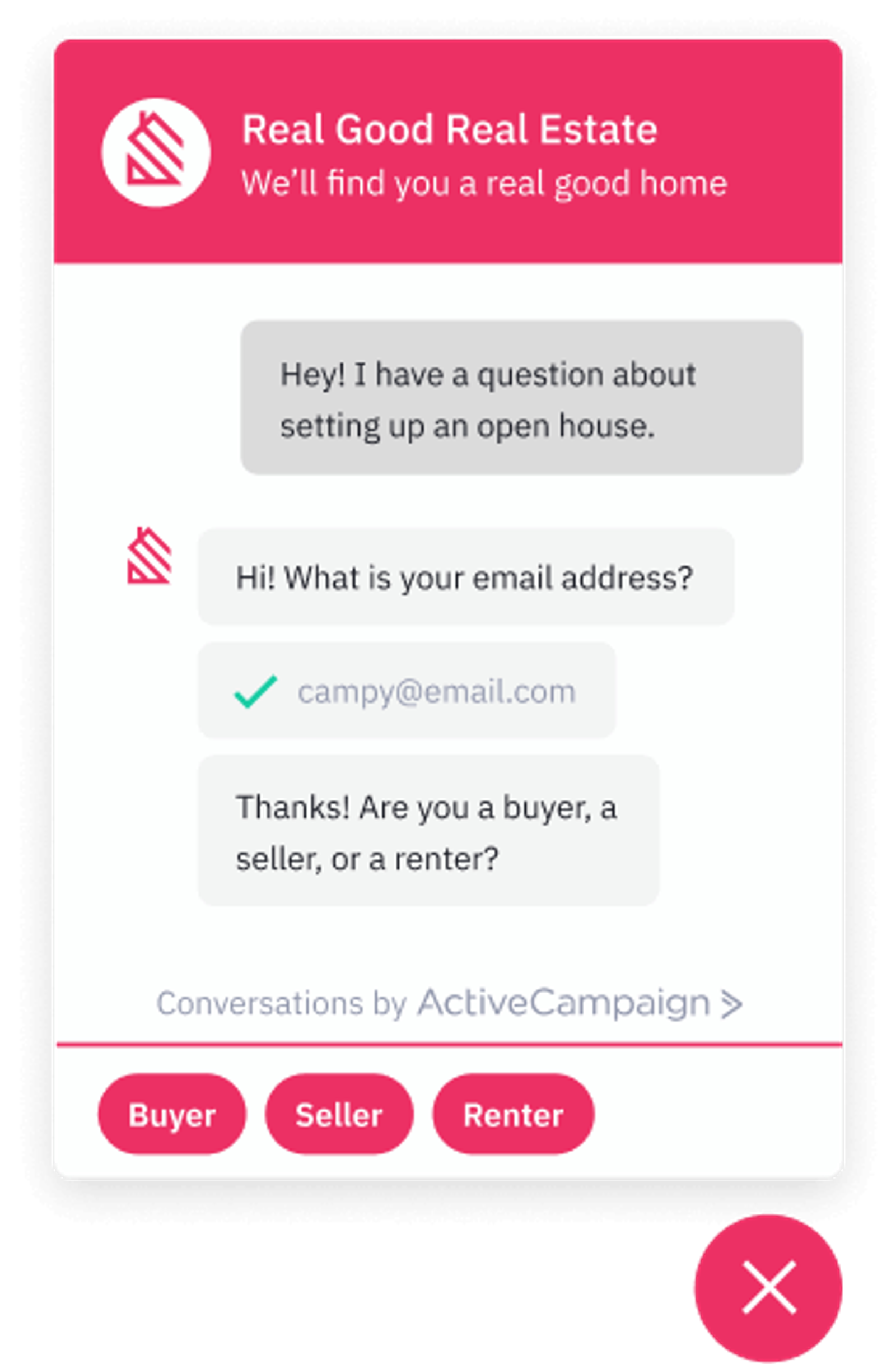
Modern marketing automation software enables small businesses to take advantage of conversational marketing. For example, ActiveCampaign users can create content blocks and automated messages to interact with potential customers day or night.
Mobile marketing
Mobile marketing refers to any marketing that takes place through a mobile device, like a smartphone or a tablet. Since more than 58% of all web browsing is now done on mobile devices, the mobile experience has to be a top priority for brands. Other types of online marketing that can fall into the category of mobile marketing include emails, social media, and paid ads.
The most basic step to create a better mobile marketing experience is ensuring your website and emails are mobile-responsive. Potential customers should be able to read and engage with your content, whether they’re using a laptop, a tablet, or a smartphone.
Mobile marketing also offers some channels that desktop online marketing does not. Apps and social media can provide push notifications, and location-based marketing can catch customers near a storefront or other opportune place. Text message or SMS marketing is also unique to mobile marketing.
SMS marketing
From app-based deliveries to in-store pickup, text message (SMS) marketing is becoming a common way to reach potential and existing customers. Texts are a more immediate and direct form of communication and can even feel more personal (when done right). In fact, 47% of millennials and 44% of Generation Z respondents said they like to be contacted by brands via text.
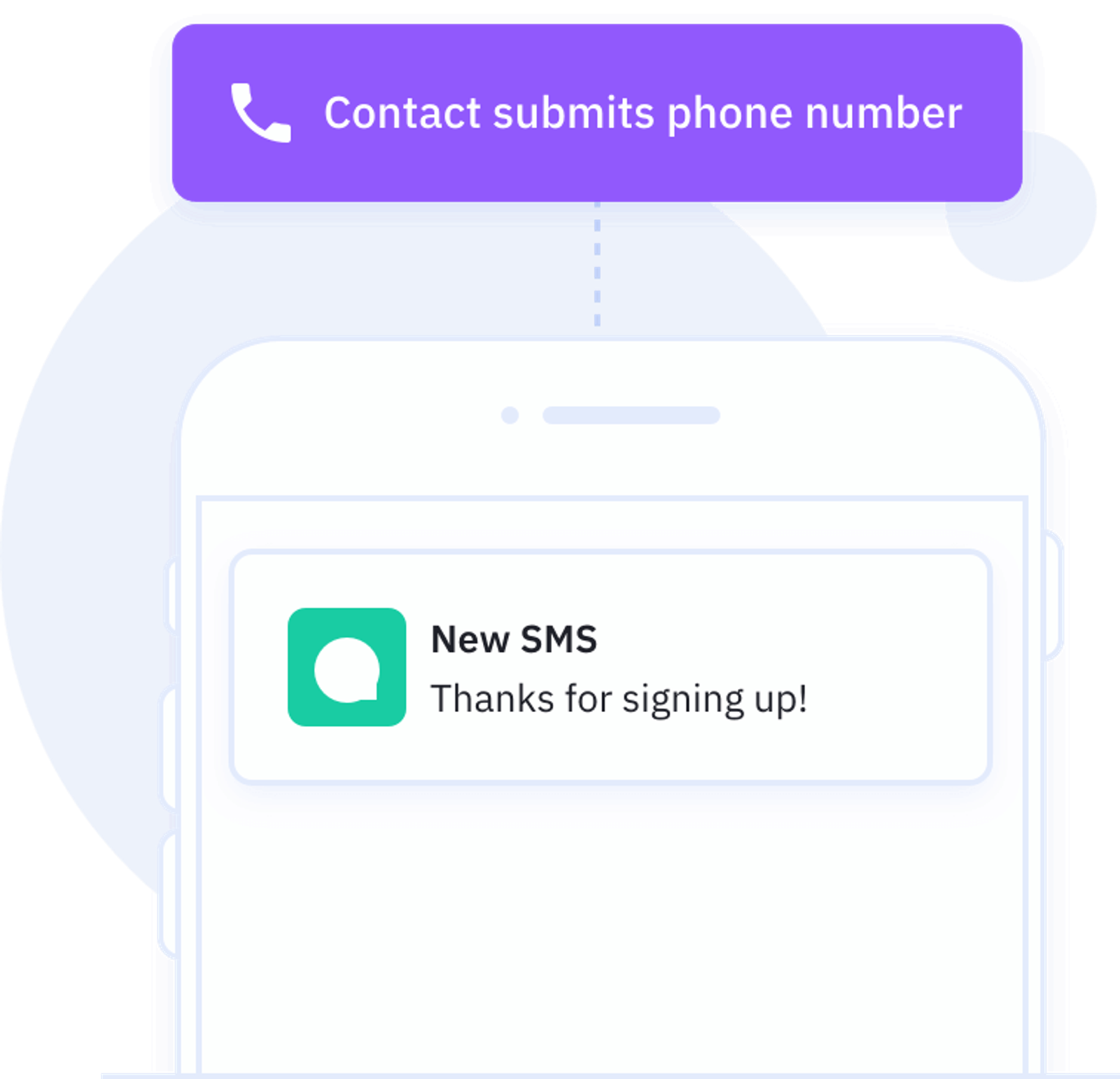
ActiveCampaign has a native SMS solution, allowing you to reach contacts on the go. It also integrates with WhatsApp and other messaging tools. This means you can use text messages as part of a multi-channel or omnichannel marketing campaign. When different communication channels work together, it creates a more cohesive and personalized customer experience.
Frequently asked questions
Here we answer some of the most common questions about online marketing.
What is an online marketing strategy?
An online marketing strategy is a plan for using various digital channels to achieve your marketing goals, such as increasing brand recognition, growing your email list, and boosting sales.
Begin by setting the marketing goals you want to achieve. Then identify which digital marketing channels (email, social media marketing, paid advertising, etc.) you’ll use in your strategy.
What are examples of online marketing?
Online marketing can take place across many different digital channels. One of the most common forms of online marketing is email. An email campaign directing recipients to visit your website is just one example of online marketing.
Other examples include advertising on any search engine or social media platform, publishing a blog targeting various keywords, partnering with an influencer to promote your brand, and sending customers text messages about upcoming sales.
How to get started with online marketing?
Although online marketing takes many forms and can extend to many channels, you don’t need to use them all initially. Once you have a destination (ecommerce store, blog, etc.) to drive people toward, choose a couple of important channels to focus on. Depending on your business, you might start with building an email list or a social following.
It’s better to be consistent and effective across 1 or 2 channels than to dabble in them all inconsistently. You can expand to others when you’ve built up a following or engagement based on your first channels. If you have an ecommerce jewelry store, you might start with social media and the SEO of your online store. From there, you can build an email list and create email campaigns.
Manage online marketing in ActiveCampaign
Online marketing is ever-expanding and ever-evolving.
Even for mainstay channels like email, best practices change, and new trends can give you a leg up on the competition. While it may be true that you can never rest when it comes to keeping your online marketing current, it also means there’s plenty of opportunity for new or small businesses.
Remember, you don’t need to master every kind of online marketing all at once.
If you’re just starting, pick a few important components (like SEO, email, and social media) and build your brand’s presence and customer experience.
ActiveCampaign allows you to manage many different online marketing channels from one place. To see what it can do for you, start a free trial of ActiveCampaign today.

